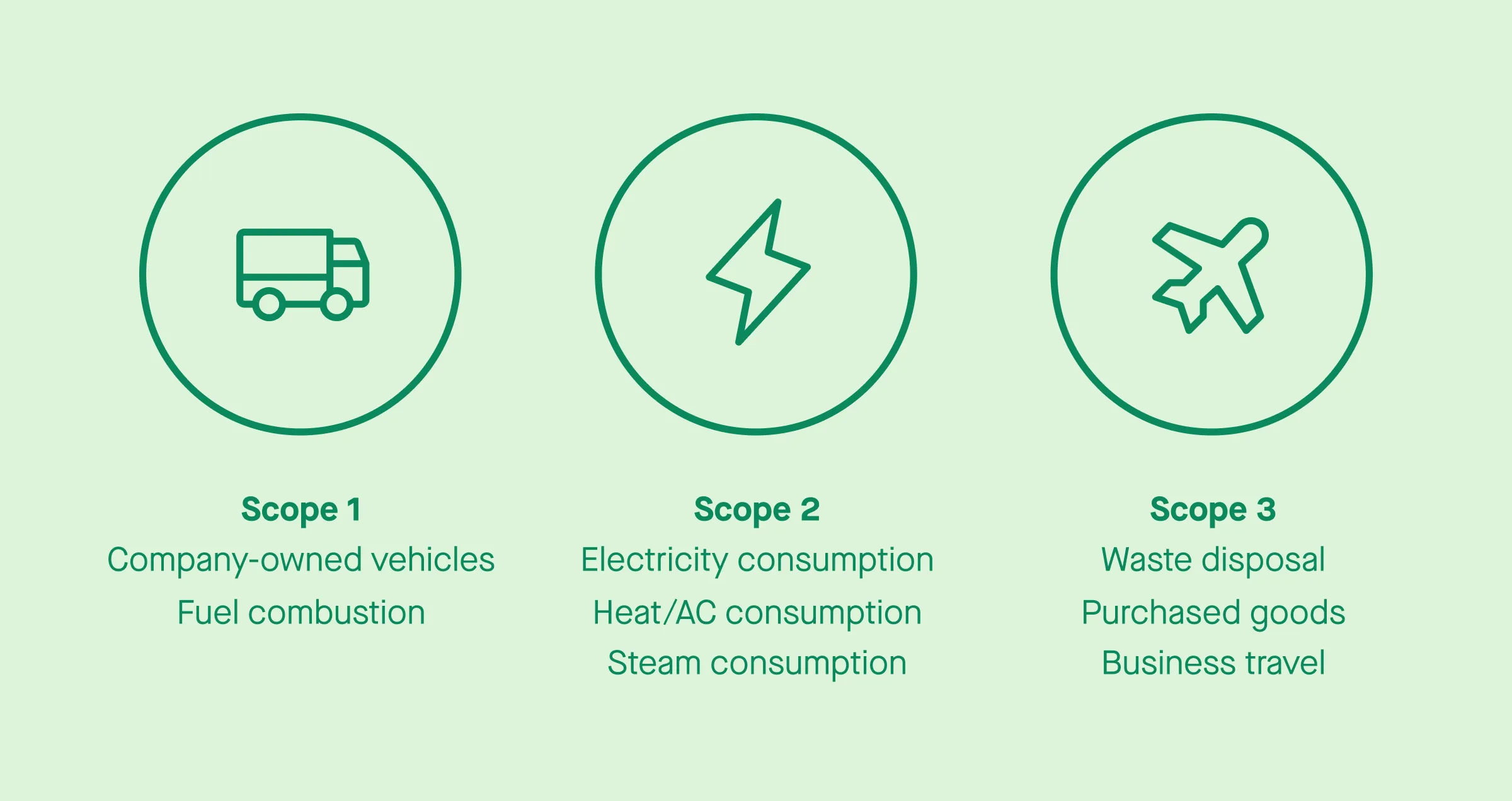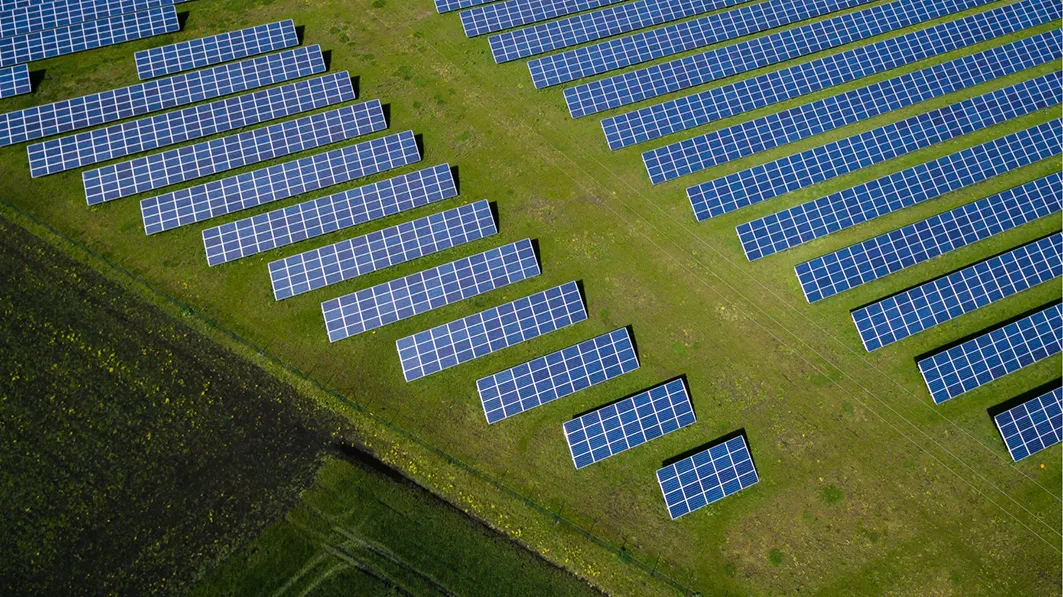The world is moving toward a net zero future, and businesses play a critical role in this transition. With increasing pressure from governments, consumers, and investors, organizations are expected to not only reduce their carbon emissions but also contribute to the global effort of limiting the global temperature increase to 1.5°C above pre-industrial levels. This means that achieving a net zero target is no longer an option but a necessity for companies that want to stay competitive and relevant in the years ahead.
In this guide, we’ll walk you through what net zero means for your business, why it’s important, and how you can create and implement an effective net zero strategy. You’ll also learn about the risks and opportunities associated with carbon emissions, the role of new technologies, and the steps you can take to build resilience and scale your efforts in the lead up to 2050.
What is net zero?
Net zero refers to the balance between the amount of greenhouse gases produced and the amount removed from the atmosphere. In simpler terms, it means reducing your carbon dioxide emissions as much as possible and offsetting the remainder, so that the net result is zero. To achieve this, you need to look at all sources of emissions, including those from energy use, transportation, and your supply chain.
For businesses, reaching net zero requires reducing emissions through energy efficiency, switching to renewable energy, and implementing other sustainable practices. However, even with the best efforts, it’s almost impossible to completely eliminate all carbon emissions, which is where offsetting comes in. Offsetting allows you to invest in projects that reduce or remove carbon from the atmosphere, such as reforestation, carbon capture, or renewable energy initiatives.
Ultimately, the goal is to achieve a net zero world, where global emissions are reduced to levels that no longer contribute to climate change, in alignment with the Paris Agreement.
Why net zero is important for business
Achieving a net zero target isn’t just about compliance with environmental regulations – it’s about future-proofing your business. By adopting a net zero strategy, you can reduce operational costs, build resilience to climate risks, and unlock new market opportunities.
One of the key reasons net zero is important is because of the growing risks posed by climate change. Extreme weather events, disruptions in supply chains, and changing consumer demands all pose significant challenges to businesses. A net zero strategy helps you mitigate these risks and build a more resilient operation that can adapt to the demands of a low-carbon economy.
Furthermore, governments around the world are increasingly introducing policies and regulations aimed at reducing carbon emissions. For example, carbon pricing mechanisms and emissions trading schemes are becoming more prevalent. If your business isn’t taking steps to reduce its emissions, you could be exposed to financial penalties and higher costs as fossil fuels become more expensive.
Investors are also placing greater emphasis on sustainability. Many institutional investors now require companies to have a net zero strategy as part of their ESG (environmental, social, and governance) criteria. If you want to attract investment and secure long-term financing, showing progress towards a net zero target is crucial.
Finally, consumers are becoming more environmentally conscious and are demanding that companies take responsibility for their carbon footprint. Businesses that demonstrate leadership on climate issues can build stronger relationships with their customers, enhance their brand reputation, and differentiate themselves from competitors.
How businesses can implement a net zero strategy
Achieving net zero requires a comprehensive and strategic approach. Here are some key steps your business can take to reduce carbon emissions and meet its net zero target:
1. Measure your emissions
The first and arguably most critical step in implementing a net zero strategy is understanding the scope of your current carbon emissions. This means conducting a detailed greenhouse gas (GHG) inventory, which typically encompasses three main categories of emissions:
Scope 1: Direct emissions from your own operations, including on-site fuel combustion, company vehicles, and any process-related emissions. This might include emissions from manufacturing, heating, or other business activities that involve burning fossil fuels.
Scope 2: Indirect emissions from the energy your business purchases and consumes. This includes emissions from the generation of electricity, steam, heat, or cooling. For example, if you’re buying electricity from the grid, the emissions generated by power plants to produce that electricity are counted as Scope 2.
Scope 3: Indirect emissions from your value chain. This is often the largest and most complex category, covering everything from the emissions of your suppliers (upstream) to the emissions associated with the use of your products and services (downstream). Transportation, purchased goods, waste, and business travel are all typical sources of Scope 3 emissions.

Measuring your emissions accurately is critical to understanding your company’s impact on global emissions. It provides the foundation for the rest of your strategy and helps you identify which areas need the most attention. Businesses should leverage tools like the Greenhouse Gas Protocol or work with consultants to ensure that the data collected is comprehensive and precise.
Once you’ve gathered this data, you can establish a baseline year for your carbon emissions, which will be essential for tracking progress as you move toward your net zero target.
2. Set science-based net zero targets
After you’ve measured your emissions, it’s time to set reduction targets that align with the scientific consensus on climate change. Science-based targets are grounded in what the latest climate science deems necessary to meet the goals of the Paris Agreement – limiting global warming to well below 2°C, with efforts to keep it to 1.5°C.
You should aim to set both short- and long-term targets:
Short-term targets (by 2025 or 2030): These should focus on significant, near-term reductions in your emissions. By setting clear goals for the next five to ten years, you create momentum within your business and signal to stakeholders that you’re serious about tackling carbon emissions.
Long-term targets (by 2050 or sooner): The ultimate goal should be to reach net zero by 2050 or earlier, depending on your industry. Long-term targets require a clear vision and a roadmap for transitioning your business to a net zero world.
Setting these targets should be done in collaboration with your sustainability, financial, and operational teams to ensure they are both ambitious and achievable. Consider having your targets validated by the Science Based Targets initiative (SBTi), an independent organization that assesses corporate emissions reduction targets for alignment with climate science.
Targets can be either absolute or intensity-based. Find out more in our dedicated resource.
3. Prioritize energy efficiency
Energy efficiency should be one of the first pillars of your decarbonization strategy. It represents a relatively quick win that can deliver both environmental and financial benefits. In many cases, improving energy efficiency can reduce operational costs while simultaneously lowering emissions.
Start by conducting energy audits to identify where inefficiencies lie in your operations. Focus on areas like:
- Lighting: Switching to LED lighting can reduce electricity consumption by up to 75% compared to incandescent bulbs.
- HVAC systems: Implementing energy-efficient heating, ventilation, and air conditioning (HVAC) systems can drastically reduce the energy required to regulate temperatures in buildings.
- Manufacturing processes: Upgrading machinery and optimizing production processes can reduce energy consumption and improve overall operational efficiency.
Automation, smart energy management systems, and behavioral changes among employees can also contribute to energy savings. Consider partnering with energy service companies (ESCOs) to implement energy-saving technologies and track performance over time.
While energy efficiency measures can lead to immediate emissions reductions, it’s crucial to continue evaluating and improving efficiency over time as new technologies and processes emerge.
4. Transition to renewable energy
One of the most effective ways to reduce carbon emissions is to transition from fossil fuels to renewable energy. The energy sector accounts for a significant portion of global emissions, and switching to clean energy sources like solar, wind, geothermal, and hydroelectric power can drastically reduce your Scope 2 emissions.
There are several ways businesses can adopt renewable energy:
- On-site renewable energy generation: Many companies are investing in on-site renewable energy installations, such as solar panels or wind turbines. This allows you to generate clean energy directly at your facilities, reducing your reliance on the grid.
- Power purchase agreements (PPAs): If on-site generation isn’t feasible, consider entering into a power purchase agreement with a renewable energy provider. Through a PPA, your business can purchase renewable energy at a fixed price, which can also protect you from fluctuations in energy costs.
- Renewable energy credits (RECs): In regions where direct renewable energy procurement isn’t available, purchasing RECs allows businesses to support the renewable energy market while offsetting their carbon footprint. However, while RECs contribute to overall grid decarbonization, it’s often better to prioritize direct renewable energy procurement when possible.
As renewable energy technologies continue to evolve and become more cost-competitive, they represent a critical opportunity to reduce carbon emissions at scale. For some industries, electrification of processes previously reliant on fossil fuels (such as electric furnaces in steel production or electric vehicles in logistics) is becoming increasingly feasible due to the rise of renewables.
5. Decarbonize your supply chain
Your supply chain likely represents the most significant source of your carbon emissions, particularly within Scope 3. Decarbonizing your supply chain requires collaboration with suppliers and partners to reduce emissions across the entire value chain.
Start by mapping out your supply chain to identify the areas that contribute the most to your carbon footprint. This could include raw material extraction, manufacturing, packaging, and transportation. Once you’ve identified the most carbon-intensive areas, work with suppliers to implement energy efficiency measures, transition to renewable energy, and adopt sustainable sourcing practices.
Some strategies to decarbonize your supply chain include:
- Sustainable procurement: Prioritize suppliers who are committed to reducing their carbon emissions and align with your sustainability goals. You can include sustainability criteria in your supplier contracts and work with them to help them meet these criteria.
- Supplier engagement: Engage with suppliers through training and capacity-building initiatives to help them understand and implement carbon reduction practices. Provide them with tools, resources, and incentives to achieve emissions reductions and support their transition to more sustainable practices.
- Collaboration and partnerships: Collaborate with other businesses and industry groups to drive collective action on supply chain decarbonization. By working together, you can share best practices, develop industry-wide standards, and pool resources to tackle common challenges.
- Sustainable logistics: Optimize your logistics and transportation strategies to reduce emissions. This can include shifting to low-emission vehicles, optimizing routes to minimize fuel consumption, and exploring alternative transportation methods like rail or shipping where appropriate.
- Circular economy practices: Implement circular economy principles to reduce waste and extend the lifecycle of products. This includes designing for durability, promoting reuse and recycling, and reducing resource consumption throughout the supply chain.
By focusing on supply chain decarbonization, you can address a significant portion of your emissions and drive broader industry change. It’s essential to build strong relationships with your suppliers and encourage transparency to ensure that emissions reductions are accurately tracked and reported.
6. Model reduction scenarios
Once you’ve established your targets and implemented initial reduction measures, it’s important to model various reduction scenarios to understand the potential impacts of different strategies. This involves analyzing how different actions, technologies, and investment decisions will affect your emissions and overall progress toward your net zero target.
- Scenario planning: Use scenario modeling tools to explore various pathways to achieving your net zero goal. This might include assessing the impacts of different technologies, energy sources, and operational changes. Consider factors such as technological advancements, policy changes, and market conditions.
- Investment analysis: Evaluate the cost and benefits of various decarbonization investments. For example, compare the financial and environmental impacts of investing in renewable energy projects versus energy efficiency upgrades.
- Risk assessment: Identify potential risks and uncertainties that could affect your ability to achieve net zero. This includes assessing regulatory changes, technological developments, and supply chain disruptions. Develop contingency plans to address these risks and ensure that your strategy remains resilient in the face of uncertainties.
Modeling reduction scenarios helps you make informed decisions and optimize your strategy for maximum impact. It also allows you to track progress, adjust your approach as needed, and ensure that you’re on track to meet your net zero target.
7. Implement decarbonization measures
With a clear strategy and reduction scenarios in place, it’s time to implement specific decarbonization measures. These measures will vary depending on your industry, operations, and emissions sources, but they generally fall into the following categories:
- Energy efficiency: Continue to invest in energy-efficient technologies and practices. This could include upgrading equipment, improving building insulation, and optimizing energy management systems.
- Renewable energy: Expand your use of renewable energy sources. Consider investing in on-site generation, purchasing renewable energy through PPAs, or supporting renewable energy projects in your region.
- Process improvements: Identify opportunities to improve operational efficiency and reduce greenhouse gas emissions. This might involve optimizing production processes, reducing waste, and implementing best practices in resource management.
- Product innovation: Develop and promote low-carbon products and services. This could involve designing products with a lower carbon footprint, improving the sustainability of your product offerings, and encouraging customers to choose low-carbon alternatives.
- Carbon capture and storage: Explore options for capturing and storing carbon emissions from your operations. This technology is still evolving but can play a role in achieving net zero for industries with hard-to-abate emissions.
Implementing these measures requires coordination across your organization and a commitment to continuous improvement. Regularly monitor progress, assess the effectiveness of your measures, and adjust your strategy as needed to ensure that you stay on track to achieve your net zero target.
8. Make strategic contributions
Beyond reducing your own emissions, businesses can also make strategic contributions to global climate efforts. These contributions can help support climate justice, drive broader systemic change, and enhance your company’s reputation as a climate leader.
Invest in carbon offset projects: While carbon offsets should not be a substitute for direct emissions reductions, they can play a role in supporting high-impact climate projects. Choose projects that align with your values and have a meaningful impact on global emissions and local communities.
Support climate initiatives: Partner with organizations and initiatives that are working towards climate goals, such as reforestation projects, renewable energy development, and climate resilience programs. Your contributions can help amplify the impact of these efforts and drive positive change.
Advocate for climate action: Use your platform to advocate for stronger climate policies and regulations. Engage with policymakers, participate in industry forums, and support initiatives that promote systemic change and accelerate the transition to a low-carbon economy.
Engage stakeholders: Involve your employees, customers, and investors in your climate efforts. Encourage them to support your net zero strategy and participate in sustainability initiatives. By building a community of engaged stakeholders, you can enhance the impact of your climate actions and drive broader change.
Making strategic contributions demonstrates your commitment to climate leadership and helps position your business as a positive force for change. It also strengthens your brand reputation and builds credibility with stakeholders.
The path to net zero emissions
As you embark on your journey toward achieving a net zero target, remember that this is both a challenge and an opportunity. The transition to a net zero world requires comprehensive planning, innovative thinking, and a commitment to continuous improvement. By taking proactive steps to measure and reduce your greenhouse gas emissions, setting ambitious targets, and implementing effective strategies, you can drive meaningful progress and contribute to the global effort to combat climate change.
While the road to net zero may be complex, the benefits are substantial. From reducing operational costs and building resilience to attracting investment and enhancing your brand reputation, a net zero strategy offers numerous advantages for forward-thinking businesses – while at the same time contributing to tackling the climate emergency.



